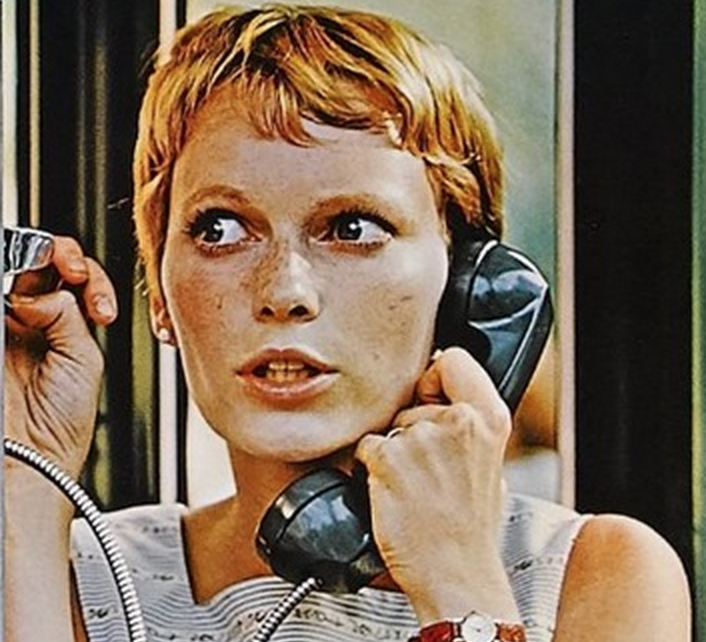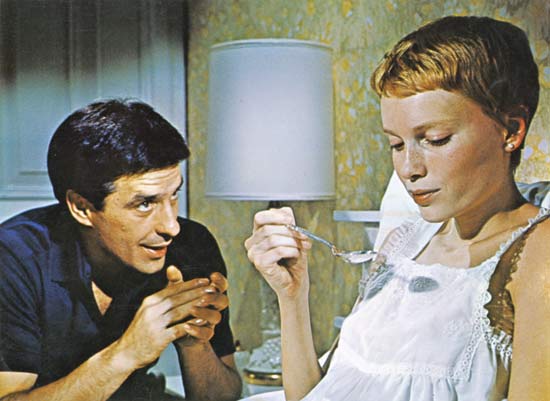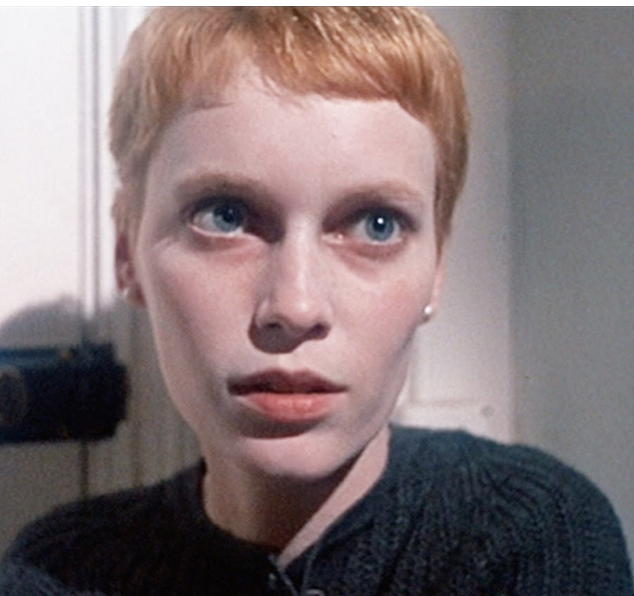 Ever since the Australian import “The Babadook” came out last year, I’ve been rethinking “Rosemary’s Baby,” which celebrates its forty-seventh anniversary on June 12. On the surface, a mother and child haunted by a children’s book character has little to do with Roman Polanski’s 1968 opus about a woman who’s been knocked up by the devil. But both are those rare films that herald rather than demonize mommies. From “Psycho” to “Mama” to “Alien,” motherhood and its associated female biological functions have always loomed as the ultimate horror in American cinema.
Ever since the Australian import “The Babadook” came out last year, I’ve been rethinking “Rosemary’s Baby,” which celebrates its forty-seventh anniversary on June 12. On the surface, a mother and child haunted by a children’s book character has little to do with Roman Polanski’s 1968 opus about a woman who’s been knocked up by the devil. But both are those rare films that herald rather than demonize mommies. From “Psycho” to “Mama” to “Alien,” motherhood and its associated female biological functions have always loomed as the ultimate horror in American cinema.
Of course, Polanksi’s glamorosa nervosa aesthetics are not to be undersold, especially when ogled on the biggest screen possible. At a recent Museum of the Moving Image screening of “Rosemary’s Baby,” I was wowed anew by its cocktail of naturalism and psychedelia; its kaleidoscope of bold pastels, mid-century swagger, and swift, iconic imagery. Mia Farrow stars as the titular Rosemary, a wide-eyed lapsed Catholic married to up-and-coming actor Guy (John Cassavetes). Though already gravelly-voiced, the late Cassavetes is matinee-idol handsome in this role; his Guy is louche incarnate in dirty tennis shoes and wisecracks never intended to rock the boat. And Mia: my goodness. There have been greater screen beauties but none as transcendently pretty as she was during this era. With that flaxen Vidal Sassoon cut; that rosy, freckled complexion; those sparrow limbs shooting out from gingham smocks, every molecule of her Rosemary screams “Alice in Dakota-land.”  Because, yeah. Though it’s unnamed here, the couple reside in the legendary building on Manhattan’s Upper West Side. Seldom has a New York City residence played such a central cinematic role. Rent-controlled, and appointed with soaring ceilings, wooden shutters, and huge fireplaces in room after room after room, this is apartment porn, plain and simple. But this decadence serves a function, too, because the flat is such a find that it establishes Rosemary and Guy have something to lose besides each other.
Because, yeah. Though it’s unnamed here, the couple reside in the legendary building on Manhattan’s Upper West Side. Seldom has a New York City residence played such a central cinematic role. Rent-controlled, and appointed with soaring ceilings, wooden shutters, and huge fireplaces in room after room after room, this is apartment porn, plain and simple. But this decadence serves a function, too, because the flat is such a find that it establishes Rosemary and Guy have something to lose besides each other.
So, the plot: Immediately after Guy befriends 70something neighbors Minnie and Roman Castevet (Ruth Gordon and Sidney Blackmer), he scores a breakout role. Rosemary and Guy celebrate their good fortune, only there’s the tiniest of snags. Unbeknownst to Rosemary, in exchange for his career boost, Guy has promised their unborn child to the satanic cult disguised as those next-door nosy nudges. On “baby night,” Minnie roofies Rosemary with a “chocolate mouse” dessert, and the coven rapes and impregnates her as she wanders through one of most quintessentially 1960s century dream montages of all time. (This is no dream. This is really happening!) Once she’s officially with (demon) child, the elder couple micromanages her pregnancy under the guise of surrogate parental support, even dispatching the highly reputable ob-gyn and secret coven member Abe Sapirstein (a growly Ralph Bellamy) to naysay her growing sense that something’s very wrong with the child she is carrying.
The real demon of “Rosemary’s Baby” is a post-World War II, Freudian-drenched culture invested in robbing mothers of their authority. Given his checkered past, Polanski is an unlikely feminist but his films have always sympathized with underestimated women. As a Polish Holocaust survivor, he may have resonated with this tale of evil tied up in banal packages. (He personally adapted the screenplay from Ira Levin’s eponymous novel.) Certainly Rosemary (and Mia) belong to that lost female generation caught between 1950s housewives and 1970s women’s libbers–you know, the broads wielding speculum mirrors at macrame parties. Though we’re told nothing about her educational or work background, Rosemary is clearly smart, with a detective’s eye for details and a penchant for wordplay; when given an amulet containing the fictional herb tannis root, she murmurs, “Tannis anyone?” But she speaks in a little-girl singsong, shrinks like the Alice she resembles, and waits on hubby hand and foot, apologizing profusely even when something’s not her fault. He swats her behind only half-jokingly when she’s slow to make his breakfast; she accepts his pique as her due.
Rosemary’s eagerness to please may pave the road to hell, but it’s also gas-lit by men intent on keeping her ignorant. When she asks Dr. Sapirstein if her pelvic pain is caused by an ectopic pregnancy, he thunders, “I told you not to read books!” Guy goes so far as to throw away one of her books himself, dismissing her instincts as if she’s an errant child he only occasionally humors. In his mind, she’s so under his thumb that she wouldn’t protest his deal with the devil even if she discovered it. It’s an oversight that goes as far back as Iago and his wife Emilia.
Rosemary’s only scene with female peers is the film’s most grounding moment. In the middle of a party, muumuu-clad lady friends encircle her, validating her growing concern that something’s really wrong. Guy explodes, calling them all “not very bright bitches,” and claiming that “your [new pixie] haircut is what’s the big mistake.” (When all else fails, distract a woman by disparaging her intelligence and appearance.) By the time she accuses him outright of having joined a coven, he and the doctor chalk it up to “hysteria” – an all-too-familiar Sigmund F. term.
Rosemary’s plight draws upon an all-too-real 20th century horror show, one in which pregnancy and child-rearing was wrested from women by condescending men wielding forceps, mothers-little-helpers drugs, and myths of penis envy and puppy dog tails. In a culture in which female intellect and intuition were actively suppressed, her experience was terrifyingly possible. Even today, this film is more than a time capsule. It’s a cautionary tale – one with Ruth Gordon burbling in Noo-Yawkese as she cha-cha-chas with the devil.
This was originally published in Word and Film, before Donald J. Trump made a Handmaid’s Tale dystopia a new reality.


